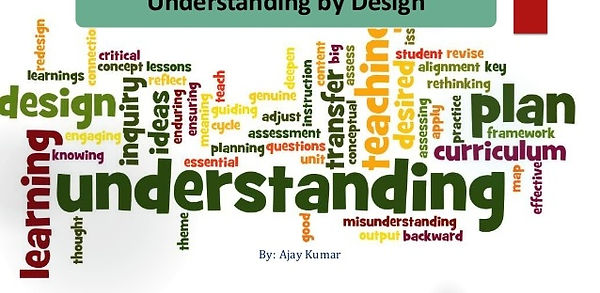.png)
This week I had to create an Understanding by Design learning plan with the course/unit that I created last week when I developed my 3 Column Table. Below is my UbD template for my course.

Understanding by Design (UbD) vs. Fink’s 3 Column Table
The Understanding by Design (UbD) and Fink’s 3 Column models are similar because they are student-centered learning and instructional designs. Both strategies focus on improving the students learning and motivating them to understand. According to Gloria et al. (2018), the UbD backward design comprises identifying the desired goals and instilling understanding, defining acceptable evidence through assessment, and designing suitable learning techniques and instructions.
UbD design identifies desirable results relating to ease the understanding of a topic, determines acceptable evidence for the assessment, and designs learning activities to achieve the desired learning goals and assessment for the students. Fink’s 3-column table is a learning design of the Fink learning taxonomy developed to improve the learning ability of students, improve their skills and abilities and improve the learning experience (Qamar et al. (2020). Fink’s method indicates that one can improve students’ learning outcomes by enhancing their understanding through basic information and ideas, the application of the knowledge to facilitate understanding and integration of learning through the creative aspects like experimentation, theory, and application. Fink’s 3-column table and Understanding by Design are similar because they focus on enhancing student understanding of a topic, developing suitable assessment techniques, and facilitating favorable learning experiences to achieve desirable outcomes.
The 3-column table and the UbD will greatly assist in the development of my innovation plan and in designing an appropriate learning environment. This reflection recognizes that successful learning primarily depends on the ability and thinking character of students. Thinking habits greatly influence learning skills, self-regulation, and how students answer questions and solve problems (Gloria et al. (2018). The 3 Column table and UbD will help to enhance the habit of the minds of the students because it inspires me to constitute formative assessments that enhance student processing of information, understanding, and interactions in the learning process. The designs will help to identify learning goals in line with students’ needs, and how to assess their performance. The techniques facilitate innovative assessment methods to engage the student in learning. The designs will offer the opportunity to use active learning strategies and offer timely feedback to meet the standard learning outcomes that support students. Thus, the UbD and Fink’s 3-Column will inspire me to design active learning strategies and offer feedback to engage students in the learning process.
References
Dwiyogo, W. D., & Radjah, C. L. (2020). Effectiveness, efficiency and instruction appeal of blended learning model. International Journal of Online and Biomedical Engineering, 16(4), 91-108. https://doi.org/10.3991/ijoe.v16i04.13389
Gloria, R. Y., Sudarmin, S., & Indriyanti, D. R. (2018, March). The effectiveness of formative assessment with understanding by design (UbD) stages in forming habits of mind in prospective teachers. In Journal of Physics: Conference Series (Vol. 983, No. 1, p. 012158). IOP Publishing. https://iopscience.iop.org/article/10.1088/1742-6596/983/1/012158/pdf
Jalinus, N. (2021). Developing blended learning model in vocational education based on 21st century integrated learning and industrial revolution 4.0. Turkish Journal of Computer and Mathematics Education (TURCOMAT), 12(9), 1239-1254. https://doi.org/10.17762/turcomat.v12i8.3035
Qamar, S. Z., Al-Maharbi, M., & Chekotu, J. C. (2020, June). A significant learning approach for materials education. In 2020 ASEE Virtual annual conference content access. https://peer.asee.org/a-significant-learning-approach-for-materials-education